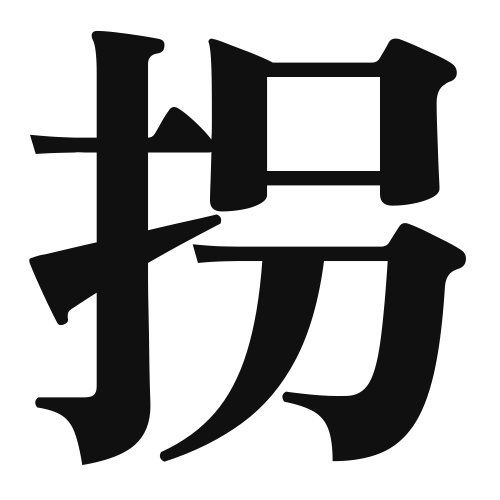1. Overview of Meaning
The kanji “拐” (kai) primarily means “to abduct” or “to kidnap.” It conveys the idea of taking someone away by force or deception.
2. Formation and Radical
Formation of the Kanji: The kanji “拐” is a compound character (会意文字) that combines elements to convey its meaning. It consists of the radical “手” (hand) on the left, indicating an action involving hands, and “回” (to turn) on the right, suggesting a circular motion or a change in direction.
Radical: The radical of “拐” is “手” (shǒu), which relates to actions performed by the hand, emphasizing the physical aspect of abduction.
3. Examples of Usage
Common Words and Phrases:
- 拐盗 (かいとう, kaitou) – abduction
- 拐かす (さらう, sarau) – to abduct
Example Sentences in Daily Conversation:
- 彼は子供を拐かすことを計画している。 (かれはこどもをさらうことをけいかくしている。) – He is planning to abduct a child.
- 拐盗事件が増えている。 (かいとうじけんがふえている。) – The number of abduction cases is increasing.
4. Synonyms and Antonyms
Similar Kanji:
- 誘拐 (ゆうかい, yuukai) – abduction, which specifically refers to the act of enticing someone away.
Antonyms:
- 保護 (ほご, hogo) – protection, which means to safeguard or defend someone from harm.
5. Cultural and Historical Background
Relation to Japanese Culture: The concept of abduction has been present in various forms throughout Japanese history, often depicted in literature and folklore.
Proverbs and Idioms:
- 「子供を拐かす者は、必ず罰を受ける。」 (こどもをさらうものは、かならずばつをうける。) – “Those who abduct children will surely face punishment.” This reflects societal views on the consequences of such actions.
